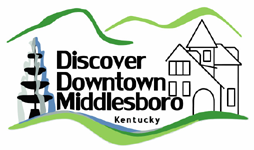Local Communities Benefit from $44,029,000 Generated by Cumberland Gap National Historical Park’s Tourism
Part of $30 Billion Impact Which Supports 252,000 Jobs Nationwide
A new National Park Service (NPS) report for 2011 shows that the 828,947 visitors to Cumberland Gap National Historical Park spent $44,029,000.00 in communities surrounding the park. This spending supported 602 jobs in the local area.
 |
| Visitors from Barbados learn about Cumberland Gap during a ranger program. Courtesy: Cumberland Gap NHP |
“With its mosaic of splendid scenery and vistas, rich history, varied recreational opportunities and almost 85 miles of trails, Cumberland Gap is a wonderful place to learn about America’s story,” articulated Park Superintendent Mark Woods. “We attract visitors from across the U.S. and around the world who come here to experience the park and then spend time and money enjoying the quality and diverse services provided by our neighboring communities in Kentucky, Tennessee and Virginia and getting to know this amazing part of the country so proudly known as Appalachia. The National Park Service is proud to have been entrusted with the care of America’s most treasured places and delighted that the visitors we welcome generate significant contributions to the local, state, and national economy.”
The information on Cumberland Gap is part of a peer-reviewed spending analysis of national park visitors across the country conducted by Michigan State University for the National Park Service. For 2011, that report shows $13 billion of direct spending by 279 million park visitors in communities within 60 miles of a national park. That visitor spending had a $30 billion impact on the entire U.S. economy and supported 252,000 jobs nationwide.
Most visitor spending supports jobs in lodging, food, and beverage service (63 percent) followed by recreation and entertainment (17 percent), other retail (11 percent), transportation and fuel (7 percent) and wholesale and manufacturing (2 percent).
To download the report visit www.nature.nps.gov/socialscience/products.cfm#MGM and click on Economic Benefits to Local Communities from National Park Visitation, 2011. The report includes information for visitor spending at individual parks and by state.
To learn more about national parks in Kentucky, Tennessee and Virginia and how the National Park Service works with communities to preserve local history, conserve the environment, and provide local recreation opportunities, go to www.nps.gov/kentucky,
www.nps.gov/tennessee or www.nps.gov/virginia.
About the National Park Service. More than 20,000 National Park Service employees care for America’s 395 national parks and work with communities across the nation to help preserve local history and create close-to-home recreational opportunities. Learn more at www.nps.gov.

No comments:
Post a Comment